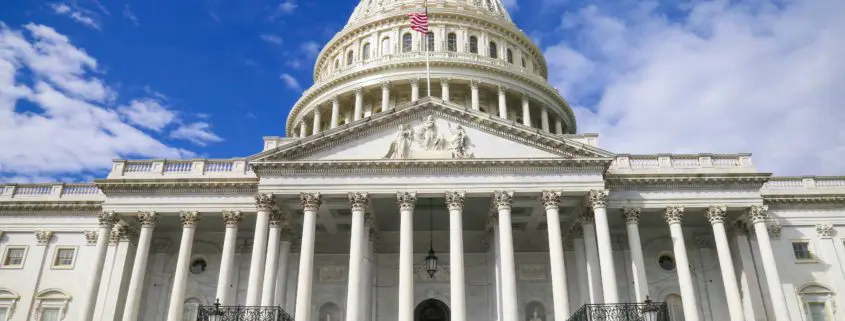The Secure Act and Your Retirement
The Secure Act: Easier and More Flexible Ways to Save for Retirement
Americans are woefully unprepared for retirement. As survey after survey has shown, the average person is simply not
saving enough to provide for a comfortable retirement. That’s why Congress is currently proposing reforms to retirement
plan rules.
The House bill, dubbed the SECURE Act (Setting Every Community Up for Retirement Enhancement Act of 2019), and the
Senate bill named RESA (Retirement Enhancement Savings Act) contain a number of different provisions designed to make
plans more accessible and flexible for savers and easier for small businesses to form and administer.
Below is a summary of the legislation’s most significant changes and how they will help more Americans save more for
retirement.
Access for part-time employees. The new rules would permit most long-term, part-time workers to participate in their employer’s retirement plan if they have worked at least 500 hours per year for three consecutive years. Additionally, employers would not be required to make employer contributions for these participants.
Longer time to contribute. Although Roth individual retirement accounts (IRAs) have no contribution time limit, contributions to traditional IRAs are not permitted after you reach age 70½. The legislation would repeal this age limit so that people working past age 70½
could contribute to both types of IRAs if they wish.
Later required minimum distributions (RMDs). Currently, plan participants and traditional IRA owners are generally required to start
withdrawing a minimum amount from their retirement savings each year once they reach age 70½. The new rules would increase this
age to 72, allowing savers to enjoy tax-deferred compounding even longer.
Penalty-free withdrawals for birth or adoption of child. This change would allow plan participants to withdraw up to $5,000, penalty
free, from their plan accounts following the birth or adoption of a child. Withdrawn amounts could later be recontributed to the plan
tax free, subject to certain requirements.
Improved portability of lifetime income. For participants whose plan gives them a lifetime income investment option — typically an
annuity — the legislation gives them the ability to either keep the annuity or roll it into an IRA or other qualified plan in the event that
the annuity option is removed from the plan’s investment lineup. The annuity would not have to be liquidated and the guarantees
would be preserved, allowing greater portability.
No more “stretch” IRAs for non-spouse beneficiaries. Current rules allow most IRA beneficiaries to “stretch” RMDs from an inherited account over their own lifetimes. The proposed rules would continue this feature for spouses, but non-spouse beneficiaries
would need to take distributions within 10 years of the IRA owner’s death. There would be some exceptions to the general rule,
however, if the beneficiary is a minor, disabled, chronically ill, or not more than 10 years younger than the deceased IRA owner.
Multiple employer plans (MEPs). The legislation would allow employers to combine forces with other unrelated employers to form
a MEP. This provision is aimed specifically at small businesses that otherwise could not offer a 401(k) to their employees due to
their high administrative costs.
A number of additional provisions target small businesses, making it easier to start and administer a retirement plan. These include
tax credits and other changes intended to reduce the amount of paperwork and costs associated with creating and maintaining a
retirement plan.
The legislation still needs to clear several hurdles in Congress before it can be signed into law. But it has bipartisan support in the
House and Senate, and the president is expected to sign it once a final bill is agreed upon. So stay tuned. A more SECURE retirement may soon be in your future.
Sources:
https://www.congress.gov/bill/116th-congress/house-bill/1994/text
https://waysandmeans.house.gov/sites/democrats.waysandmeans.house.gov/files/documents/SECURE%20Act%20section%20by%20section.pdf
https://www.finance.senate.gov/imo/media/doc/RESA%20Summary%204.1.19-banner-converted.pdf
https://www.congress.gov/bill/116th-congress/house-bill/1007/text
Because of the possibility of human or mechanical error by DST Systems, Inc. or its sources, neither DST Systems, Inc. nor its sources guarantees the accuracy, adequacy, completeness or availability of any information and is not responsible for any errors or omissions or for the results obtained from the use of such information. In no event shall DST Systems, Inc. be liable for any indirect, special or consequential damages in connection with subscriber’s or others’ use of the content.
© 2019 DST Systems, Inc. Reproduction in whole or in part prohibited, except by permission. All rights reserved. Not responsible for any errors or omissions. The opinions voiced in this material are for general information only and are not intended to provide specific advice or recommendations for any individual. All performance referenced is historical and is no guarantee of future results. All indices are unmanaged and may not be invested into directly. This article was prepared by DST Systems Inc. This information is not intended to be a substitute for specific individualized tax or legal advice. We suggest that you discuss your specific situation with a qualified tax or legal advisor. Please consult me if you have any questions. LPL Financial Representatives offer access to Trust Services through The Private Trust Company N.A., an affiliate of LPL Financial.













Leave a Reply
Want to join the discussion?Feel free to contribute!